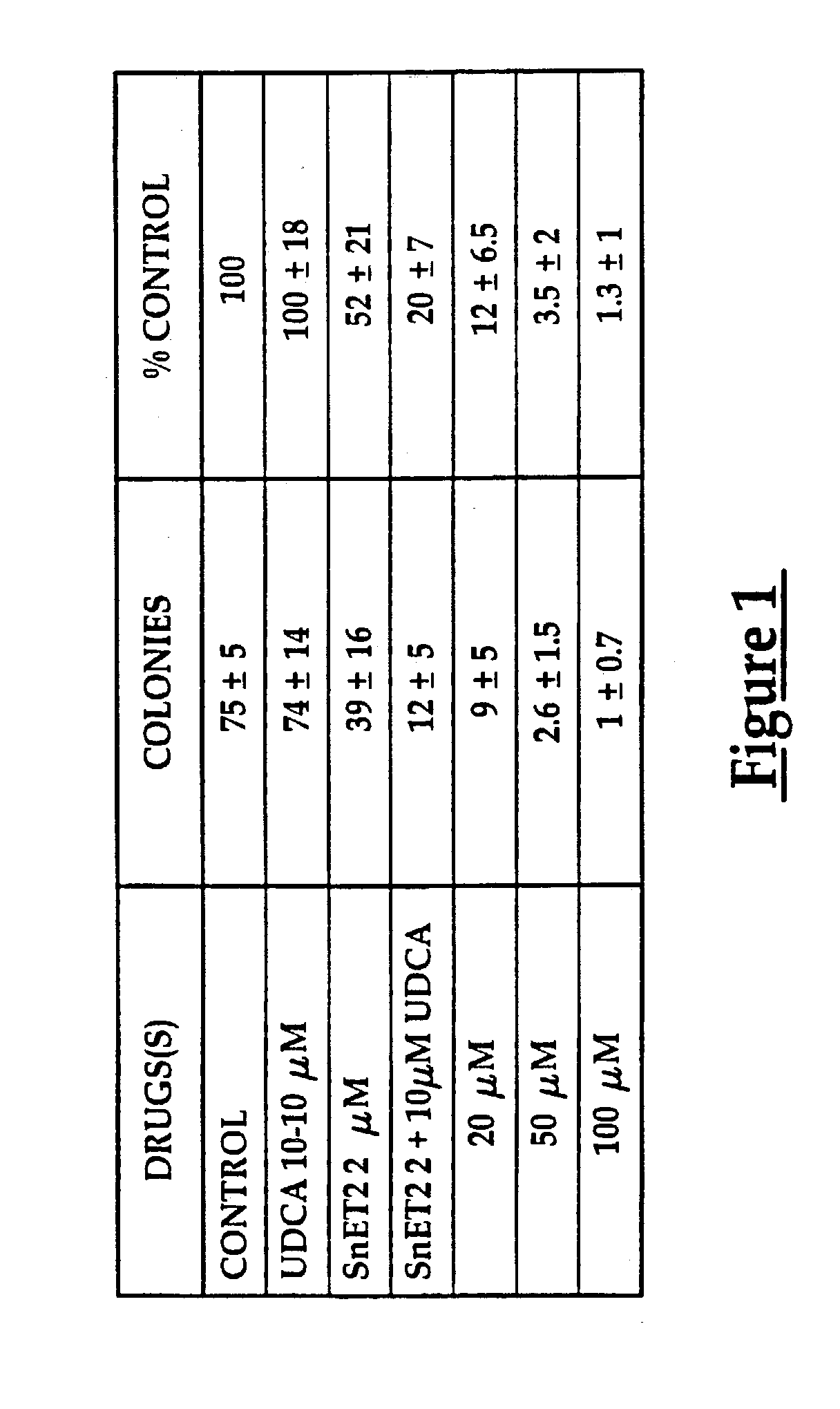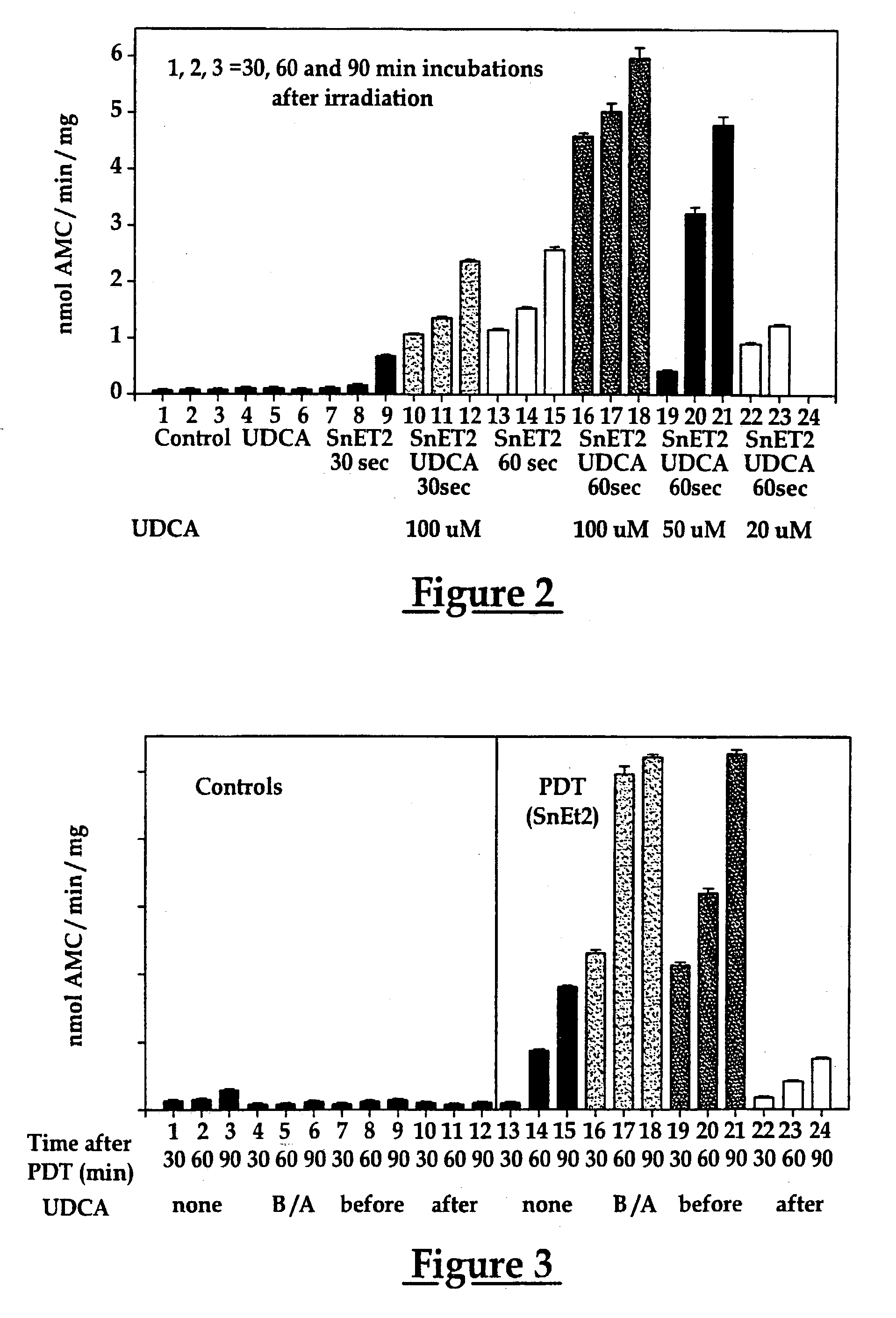Use of ursdeoxycholic acid for potentiation of the phototoxic effect of photodynamic therapy
a photodynamic therapy and ursdeoxycholic acid technology, applied in the field of ursdeoxycholic acid for potentiation of the phototoxic effect of photodynamic therapy, can solve the problems of inability to use the agents in the clinic, damage to the treatment of cancer cells, and inability to achieve the effect of photodynamic response,
- Summary
- Abstract
- Description
- Claims
- Application Information
AI Technical Summary
Problems solved by technology
Method used
Image
Examples
Embodiment Construction
[0055] General Methods:
[0056] Cell lines. Studies have been carried out with the murine leukemia L1210 and murine hepatoma hepa 1c1c7 cell lines along with primary rat hepatocyte cultures. Except for the latter, cells are grown in tissue culture. The L1210 cell line is grown in suspension culture in Fischer's medium containing 10% horse serum. The murine hepatoma 1c1c7 cell line was obtained from Dr. J. Whitlock, Jr. (Stanford University, CA). Cells were cultured on either commercially available plastic tissue cutureware, or poly-L-lysine coated glass coverslips or discs, and grown at 37.degree. C. in a-minimal essential medium (aMEM) containing 5% fetal bovine serum and antibiotics. Cultures were passaged by incubation with a trypsin+EDTA solution (0.25% trypsin, 1 mM EDTA in Hank's Balanced Salts Solution).
[0057] Photosensitization protocols. A series of photosensitizing drugs, together with their sites of action, are shown in Table 1:
2TABLE 1 Sensitizer Target Sensitizer Target P...
PUM
| Property | Measurement | Unit |
|---|---|---|
| time | aaaaa | aaaaa |
| threshold of responsiveness | aaaaa | aaaaa |
| photosensitivity | aaaaa | aaaaa |
Abstract
Description
Claims
Application Information
 Login to View More
Login to View More - R&D
- Intellectual Property
- Life Sciences
- Materials
- Tech Scout
- Unparalleled Data Quality
- Higher Quality Content
- 60% Fewer Hallucinations
Browse by: Latest US Patents, China's latest patents, Technical Efficacy Thesaurus, Application Domain, Technology Topic, Popular Technical Reports.
© 2025 PatSnap. All rights reserved.Legal|Privacy policy|Modern Slavery Act Transparency Statement|Sitemap|About US| Contact US: help@patsnap.com


